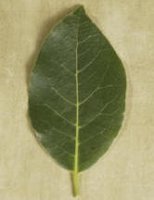Just what do Bay Leaves DO anyway?
 Bay leaves add an important something, but what?—
Bay leaves add an important something, but what?—Houston Chronicle
Ask people to describe the taste of bay -- even a group of renowned herbalists -- and they may come up short.
"It's hard to describe," said a momentarily stumped Bill Varney of Fredericksburg Herb Farm. "Gosh.""It's just another layer of flavor," said Champions resident Mary Versfelt, longtime member of the Herb Society of America and a cooking teacher who specializes in herbs. "I can't quite put my finger on it."
The question elicited answers as wide-ranging as spicy, herbal, fennellike, pungent, subtle, balsamic, bittersweet and butterscotchy.
It's also important to make sure you note the difference between the two major leaves. California bay is often sold as Bay laurel, but they are not actually the same.
Among the reasons the taste of bay can be hard to pinpoint is that it often works as a "blending herb," according to Lois Sutton, Houston resident and education chair of the Herb Society of America. Blending herbs, she continued, "seem to bring together the flavor of other things. Parsley is a great blending herb. Dill can be a blending herb. Instead of all these discordant tastes, it seems to bring them together into a smooth flavor."
Picture your spice cabinet as an orchestra. Bay is the viola. Unlike the showier violin (think cinnamon), it's an instrument few listeners can distinguish, and it rarely gets to play the melody. But without it, the orchestra's sound would be less complex.
Bay is also categorized as a "simmering herb," meaning that it's typically added to a dish early in the cooking process and simmers or infuses in liquid so that its flavor emerges. Remember to remove the whole leaves before you eat the dish. Their sharp edges can perforate your insides.
Ouch.
Related Article:
Using Fresh Bay Leaves


Appreciate you blogging tthis
Posted by Tom Stankewicz |
2:34 PM, May 24, 2023
Tom Stankewicz |
2:34 PM, May 24, 2023